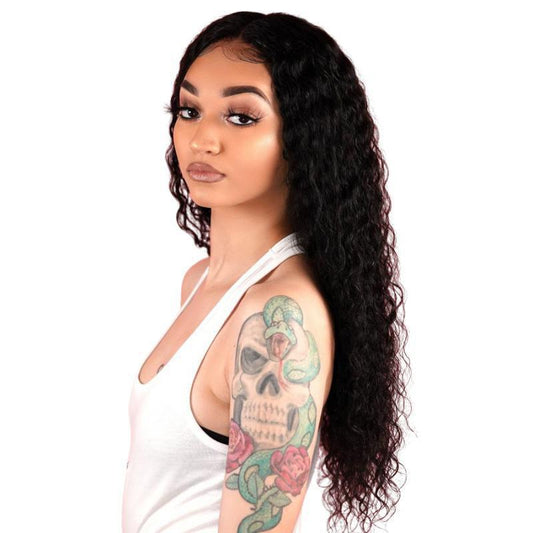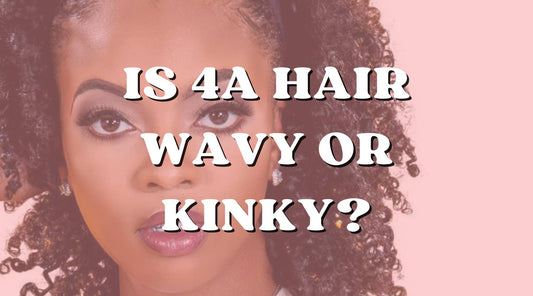
10 Reasons I Hate Quick Weaves That You Can Probably Relate To
Mikey MoranA quick weave involves bonding human hair extensions to your hair over a protective cap, or applying a unique liquid-gel formula to your hair and allowing it to harden and dry acting as a barrier between the hair glue and the natural hair.
A long time ago, before I knew about all the beautiful alternatives in the world of hair extensions, and to be honest, before I could probably afford any of them, I was a chronic quick-weaver.
I enjoyed the quick weaves because of how fast and cheap they were. I like that I could get a style just as quickly as I could take it out.
What made it even better is that it would probably run me $100 altogether.
However, after a few years in the extensions game, I have grown to hate the idea of quick weaves, and here are ten reasons in a very particular order of why:

#10 The Hair Used for Quick Weaves
Typically processed hair is used for quick weaves.
The hair used for these installations is not virgin hair bundles or remy raw hair bundles. Virgin hair is hair that is reportedly left in its natural state and collected from a single source.
Remy hair is human hair that is exceptionally close to virgin hair; washed and treated for the cuticles to lay flat and in the same direction.
Beauty store hair, “pack hair” or tracks as it sometimes affectionately called is tracks. Tracks are very processed extensions; extensions treated with silicone and the cuticles of the hair stripped.
Pack hair is cleansed with bleach and other chemicals and mixed with nylon thread or even animal strands.
Do not get me wrong; there is nothing innately wrong with pack hair. However, there are a couple of things that bothered me about trying to use it consistently.
For instance, it
- Gets stiff quickly.
- Might hold a smell.
- Has a lot of unknown chemicals.
Pack hair is always soft and flowing at least in the beginning!
After a week or two of wear, it becomes stiff. I hate for my neck to move and my weave to stay still! It can become colossal insecurity and look killer to have a rigid weave.
It’s like the top ten in beauty don'ts. “If the weave doesn’t flow, it must go” is my motto. Next, I noticed that pack hair holds a smell.
After flat ironing, my hair would often have a burnt or metallic scent, which I could contribute to the quality of the hair.
This stench is something I have only experienced with virgin hair if I had my flat iron set to a very high temperature and have repeatedly flat ironed it.

#9 The Quick Weave Installation
Choosing the right stylist is crucial!
One of the biggest struggles of having a quick weave switch-up was the difficulty in finding someone who does it right. It’s like the lace frontal epidemic that is going on right now!
Everyone claims that they know how to do it, they make it look easy and assure you that everything will be okay.
Imagine you found a hair stylist who does quick weaves for $65, back then, you would check out her Facebook and decide to take a chance on her.
BOOM, your tracks end up glued in sloppily, she used way too much lace frontal glue, and it isn’t as flat as you envisioned it would be.
I believe that people think that because it is “just some glue and tracks,” that it does not take that much work, however, with any style a stylist should take pride and care in their installations.
Quick Weave Install Process
The quick weaves installation process was not my favorite.
The bonding glue is cold when applied, the style requires excessive heat applied to the hair, and there is an abundance of products used.
In order to get a quick weave, your hair is either molded down with gel or braided into two braids and gelled on the sides.
Some stylists use a protectant as well to help the hair stay healthy and the removal to be more straightforward.
It can be a Heat Protector Spray or Glue Skin Prep to avoid irritations.
After the molding and protectant added, your stylist may sit you under the dryer or use a blow dryer to help harden the mold. After molding, a cap is applied, then the tracks are applied to the cap with glue.
The glue solidifies in place by blow-drying the tracks, and this process repeats as each track's added.

#8 Hair Itching
My skin and scalp are susceptible; it is easily irritated by the glue.
My hair itches and sweats more when in quick weave installations. I believe the excessive itching attributed to the product build-up of gel, adhesive, and dirt.
It's uncomfortable and just another reason I hate quick weaves.

#7 Lack of Accessibility to Your Hair
The quick weave method of wearing hair extensions allows little to no accessibility to hair.
While the nape, edges, and leave-out are readily available, one cannot wash their hair with a molded style due to the gel and glue that keeps the form together.
Additionally, you will be unable to scratch your scalp without disrupting your tracks or breaking the cap which will lessen the longevity of your style.

#6 Lack of Longevity
Quick weaves are supposed to be that, quick.
These are styles that should not have a long installation time for the processor wear.
Bonded installations can have four weeks of wear with proper maintenance. Leaving this hairstyle in any longer can lead to a sloppy style, itching, and stress on your hair.
Additionally, once the hair is taken out, it will not be reusable, meaning that you will have to scrap the entire hairstyle.
There is no such thing as “quick weave maintenance.”

#5 The Smell
I wish I could plead the fifth for this one and claim that my hair always smells like Cantu and strawberries, but for you, I’ve decided to be real.
Quick weave installations often tend to trap a lot of things under those stretchy black caps. From my experience with quick weaves, it seems that my hair is more smelly than when worn natural or in sew-ins hairstyles.
The natural oils of my scalp, the glue smell, dirt, product and the inability to wash my hair mingle together to create a weird smell.

#4 Lack of Versatility
Quick Weaves lack versatility.
While your edges and nape can be left out to offer a more natural look, quick weaves are not the most versatile style. Due to the gluing of the weft manipulation is not easy.
A bond in technique is not conducive to a ponytail or braids.
But you can resort to these beautiful adjustable cuffs human hair ponytails extensions.
It’s a no-go for girls who enjoy to quickly swap out their styles or try to fun new things with their installations.

#3 The Takedown
Removing a bonded weave is one of the most annoying, painstaking tasks in hair history!
Despite there being multiple glue removal shampoos and products on the market, the hair cap still ends up being a pain to remove.
As I explain in my next bullet point, the glue even can get on hair and cause the cap to stick.
As with any removal, there are multiple steps in withdrawal. One must take the tracks off the cap, remove the cap from the hair, free the hair of glue and wash and condition.
Though it seems with quick weaves, these steps end up being repeated a little too much for my liking.
Products such as Safe Lace Paste Remover or oils, do a great job of making hair easier to take down.
Consequently, adding more products to the hair to aide removal will mean that you are now stuck with more unwanted products in your hair.
The glue removal shampoos are for just that- glue residue removal. These shampoos do not necessarily hydrate or strengthen hair.
Thus, it is one more step in the washing process that does nothing to create healthier, stronger hair.
In other words, you will still have to wash and condition after this stage.

#2 The Quick Weave Cap
Alright, this isn’t a huge issue that I have with quick weaves, but it landed second on the list because it blocks access to the scalp.
A weave cap can also show with installations. Last but not least a weave cap sticks to your hair.
A cap applied to your hair after molding to act as a barrier between the track glue and your hair strands.
However, this cap is usually not thick enough to keep all glue from reaching the hair.
Eventually, it ends up stuck, if partially, to your hair. Which brings me to my number one issue, drum roll please:
#1 The Quick Weave Glue
Hair glue is top of the list of my dissatisfaction with quick weaves.
The hair glue leaves a residue sticky residue on your hair, even after you’ve washed and conditioned!
It is difficult to get extra glue out of your hair without damaging strands or putting stress on the scalp.
I prefer the smooth method of cutting out the thread with sew-ins, instead of the glue remover, and a million washes it takes to remove this stubborn glue!
The hair glue is also not as durable as other methods of getting extensions. Work out? Your tracks are sliding. Hair grows?
Your tracks will slip. Got it wet? Forget about that hairstyle, go ahead and grab your remover and a comb now.
I have to say that I may have a huge bias when it comes to adhesive because I just love the feeling of a quick and easy wig.
Final Thoughts
Quick weaves, glue-ins, or bonded weaves can be a quick and cheap option for extensions.
This method can be useful for quickly switching up your style and trying out new things.
It is essential to keep in mind that healthy hair comes before having a cute hairstyle.
I love extensions, and switching it up, so I will probably never fully cross any method from my list.
Be mindful of the products used on your hair and your removal process. Follow these steps and maybe quick weaves will not be dreadful for you!



















2 comments
Thanks for sharing your insights on quick weaves! Given your experience, what alternative hair extension method would you recommend for someone looking for both convenience and hair health?
Interesting insights! How do you manage the maintenance of quick weaves to minimize hair damage?